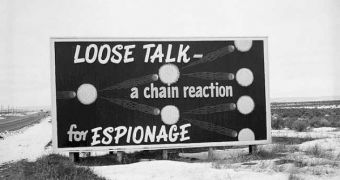Recently, reports in the press stated that experts from the International Atomic Energy Agency (IAEA) had drafted a secret paper, saying that Iran had the necessary expertise required to build a functional atomic bomb. Within a few hours after the report surfaced, officials from the United Nations nuclear watchdog published a statement condemning the reports, and saying that no such secret document existed. Many experts around the world believe that the country harbors nuclear ambitions, although no conclusive proof in this sense has ever been uncovered.
“With respect to a recent media report, the IAEA reiterates that it has no concrete proof that there is or has been a nuclear weapon program in Iran,” the agency's statement reads. One of the main reasons for this, scientists say, is the fact that it's notoriously difficult to assemble a working nuclear bomb. “It's a very challenging goal. I'd say they're at least a good year or more away from developing a basic weapon. They need to fabricate a bomb, and to get it on a missile warhead is tricky,” the Deputy Director of the James Martin Center for Nonproliferation Studies, Leonard Spector, said of Iran in an e-mail interview with LiveScience.
There are voices that say President Barack Obama recently renounced the idea of installing missile-defense systems in parts of Eastern Europe precisely to gain Russia's favors. In turn, the analysts say, the former Soviet Union would assist the US in keeping an eye on Iran and its nuclear program. Authorities in Tehran have always said that their atomic-researcher program is a civilian one, but some states, led by the US, are increasingly paranoid that the Middle Eastern nation is planning to develop weapons of mass destruction.
Among the most difficult steps in constructing a functional nuclear weapon is producing or otherwise finding sufficient amounts of isotope U-235. Weapon-grade uranium is found in very small concentrations in extracted uranium, and only about 0.7 percent of all amounts can be used for this purpose. The material then has to be enriched, a detonator needs to be produced, and then the entire ensemble mounted on a rocket capable of delivering the heavy payload to an intended destination. Additionally, in nuclear bombs, U-235 needs to be refined to a preferred concentration of above 90 percent, experts say.
“All the really dangerous actions that Iran can do, haven’t been done. They do not appear to be manufacturing parts or developing designs for an advanced nuclear weapon. So if the US can strike a deal with them where both sides can find some satisfaction, it may be enough to end the crisis,” Spector concluded.

 14 DAY TRIAL //
14 DAY TRIAL //